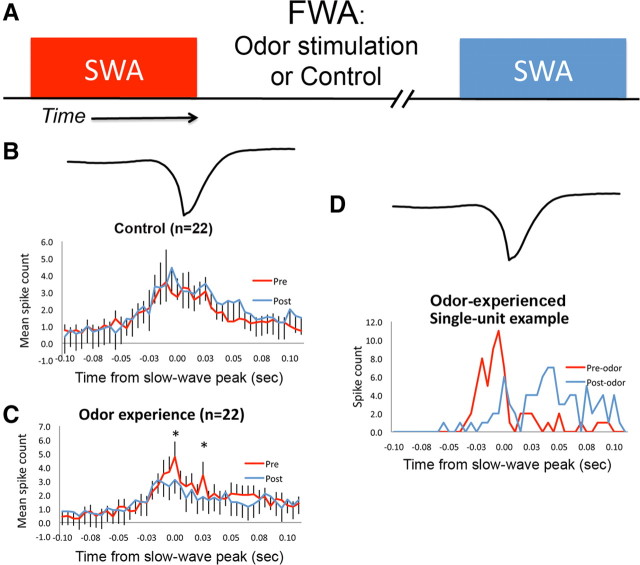Figure 2.
A, Basic experimental design. Spontaneous cortical activity was monitored during SWA (no odor was delivered during SWA). Then, during the next FWA period, odor pulses were delivered to drive cortical activity or no odor in the control condition. Finally, spontaneous activity was again monitored during the subsequent SWA period for comparison with prestimulation SWA activity. B, Single-unit entrainment to slow waves (LFP slow-wave trace at top) was stable over consecutive SWA episodes in control cells. Graph shows mean spike counts across all control units relative to slow-wave peak. C, However, if repeated odor stimulation occurred during the FWA episode intervening between two SWA periods, then single-unit entrainment to slow waves during the post-odor SWA episode was modified. There was a significant decrease in mean firing rate before odor compared with before odor near the peak of the slow wave (*p < 0.05, odor-exposed different from control). D, This change in mean slow-wave-associated unit activity may be attributable to experience-induced shifts in single-unit entrainment. In this example, the PSWTH shifted from early in the slow-wave pre-odor stimulation to later in the wave post-odor stimulation.

